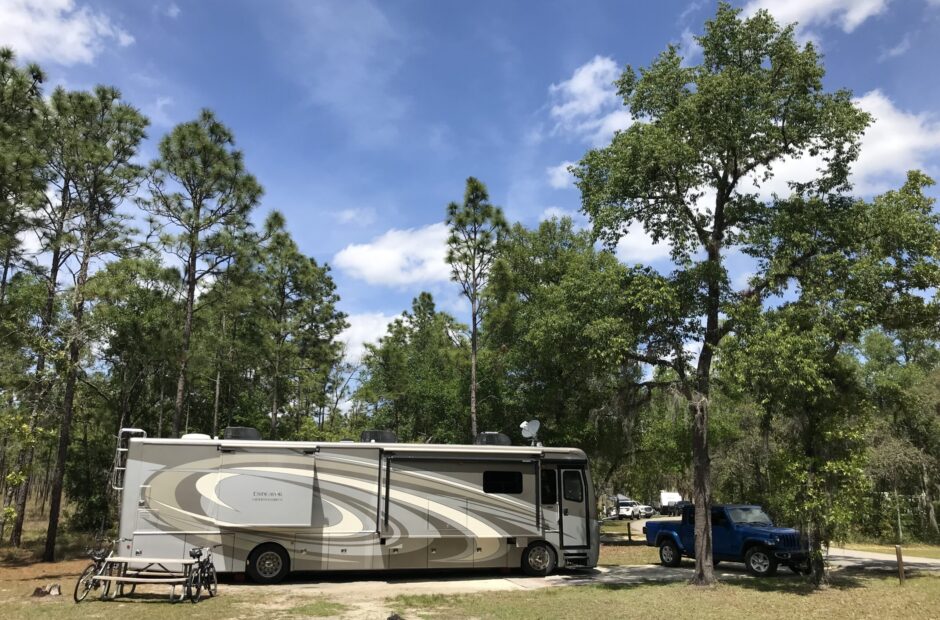Shadrack Campground, Bristol, Tennessee
And when the day of Pentecost was fully come, they were all with one accord in one place. Acts 2:1
I don’t know, maybe I shouldn’t make (actually repeat) a joke involving Scripture, but God gave us a sense of humor. A portion of this verse is part of a joke from way back – – How did the apostles travel around? In an Accord. Ha!
“You might be a Redneck . . . . if you think the last four words of the ‘Star-Spangled Banner’ are gentlemen start your engines.”
So says Jeff Foxworthy. He’s always been a great stand-up comedian!
And the reason for these jokes? For some unknown reason, I was trying to find NASCAR jokes to begin this post. And yes, this is the best I could come up with. 😊
Why NASCAR? Because we visited the track at Bristol Motor Speedway today. What a great tour! There was no one else there when we arrived just before 10am, so we got our own private tour with our own tour guide in our own private tour van! And all for just $4/person! ($5 regular) We actually qualified for a Senior discount! For some reason, they consider seniors 55+. Yea!
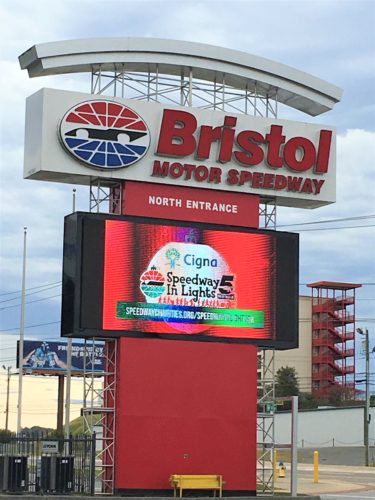
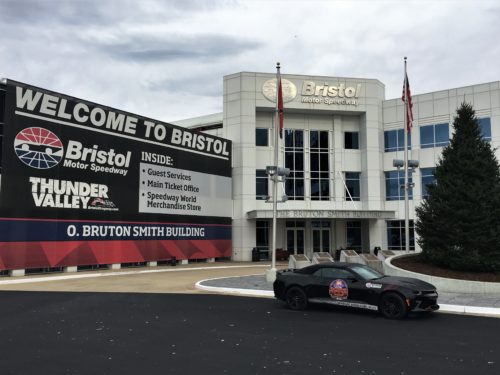
Remember the approximate size of that welcome banner – right down to the ground.
That’s where we went in to sign up for the tour Blaine read about.
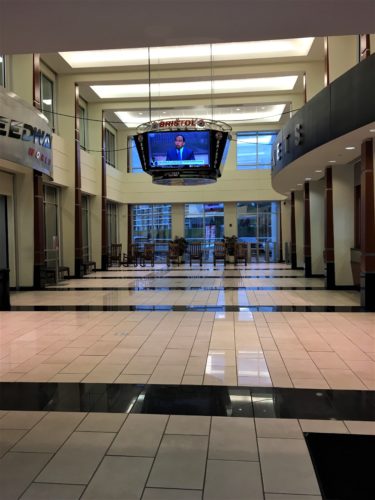
Gayle did a great job, driving us around the place and even on the track!
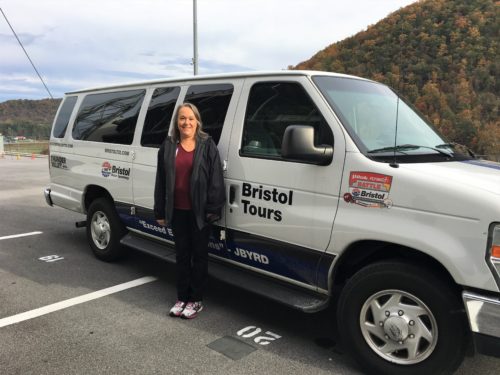
This is Gayle and her van.
I’m thinking they get much busier and the van fills up.
As well as giving us tons of interesting information. For example – the half-mile oval speedway was built in 1960 at a cost of $600,000 and had a seating capacity of just 18,000. The first pole sitter earned the position with a top speed of 79.225mph and the winner took home a purse of $3,225. The race was billed as the world’s fastest half-mile and held on July 30, 1961 and was 500 laps. After lap 290, the driver (and the man awarded the win) got out of his car – because the extreme heat was blistering his feet – and a new driver entered. In 2013, Kyle Busch set a new track record of 129.535mph (it took him 14.813 seconds to make the lap!). Seating capacity was gradually increased until, in 2002, it reached 162,000. The Dragstrip was added in 1965 at a cost of $1million. A good chunk of that cost was earth-moving expenses because they had to practically level a mountain (locals call them ‘knobs’). We weren’t able to visit the dragstrip because they were setting up Christmas decorations that will include over 2 million lights, but more on that later.
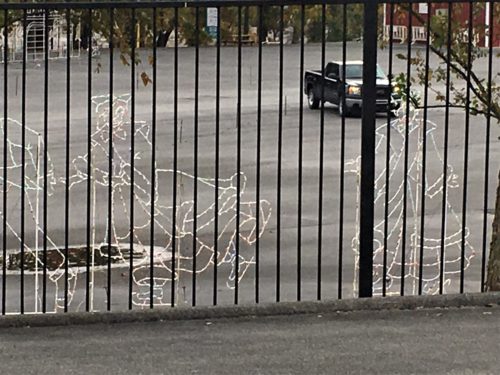
The Christmas lights are set up on a made-up road course throughout the speedway area.
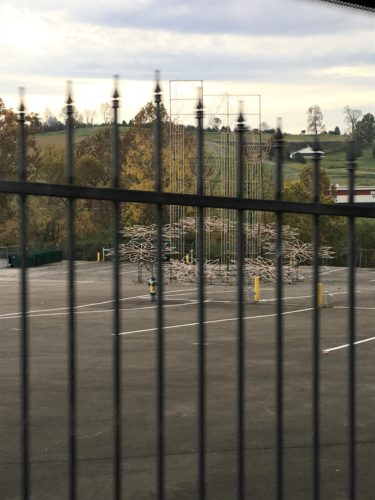
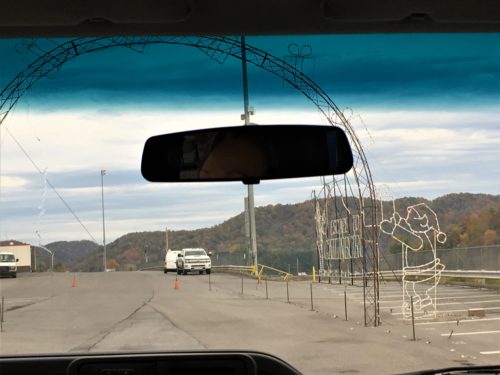
There are currently 70 full-time employees, but the number swells significantly to about 7,000 (no that’s not a misprint!) for the larger events. The current owner, Billionaire O. Bruton Smith is still going strong at 91 years young and owns a total of 8 tracks – Atlanta, Bristol, Charlotte, Kentucky, Las Vegas, New Hampshire, Sonoma and Texas.
Tired of reading facts yet? If you’re not a NASCAR fan, here’s one you’ll probably like.
Every year, the owner hosts one of those “drive-around” Christmas light festivals. Part of the 5-mile drive takes you down to actually drive around the track! Slowly of course. 😊 It costs $15-20/car ($20 on the weekend), and every single penny goes to an organization founded in 1996 by Mr. Smith called Speedway Children’s Charities. The local power company covers the cost of the electric and Mr. Smith pays the staff himself. Wanna know how successful it is? In 2013, the attendance was 10,000 – – in one single night! Up to 2013 (that’s the most recent information I could find), the average annual attendance has been 200,000. Oh. And guess what? Better make sure you have a full tank (gas and food!) when you go, because if they’re busy, it can take 4 hours to get through it. (I’m assuming that includes some waiting-in-line time?)
Let’s get on with the tour, shall we? First up. The owner’s suite!
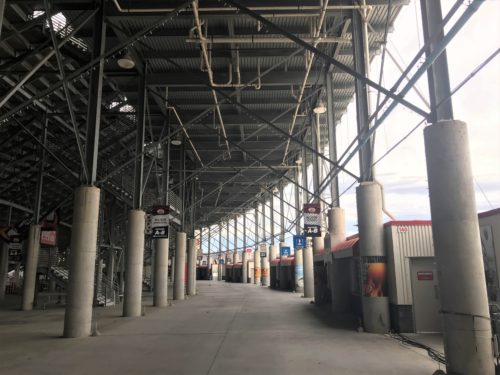
Gayle unlocked a gate so we could get in here.
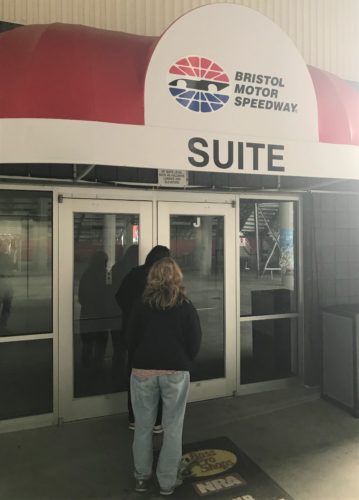
Then it was up to the owner’s suite!
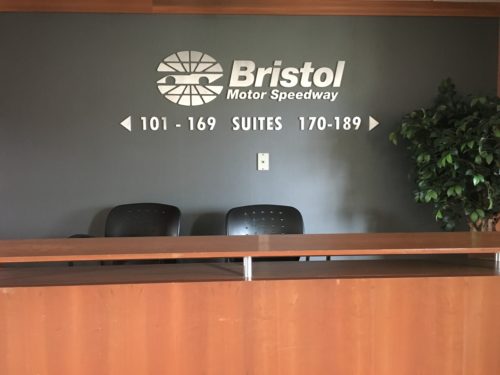
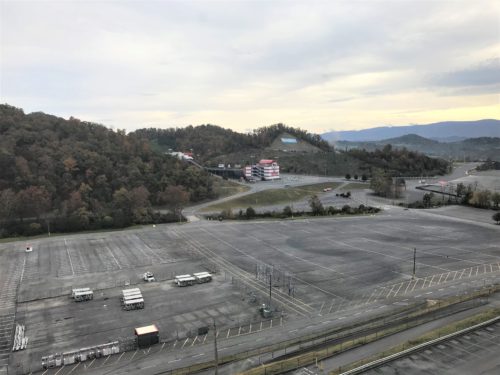
Not there yet, but there were windows show the view.
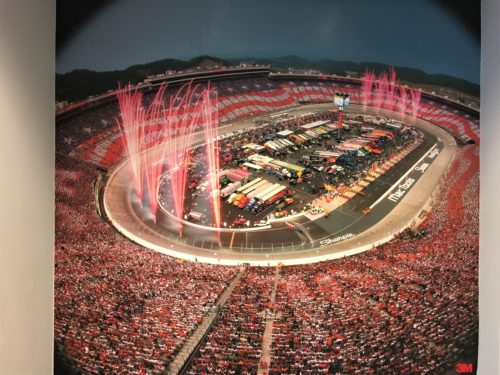
This is a photo that was taken on the Sunday following 9/11.
I think Gayle said it was the largest “card trick” in a stadium. (where people hold up cards left on their seats.)
It’s posted outside the elevator.
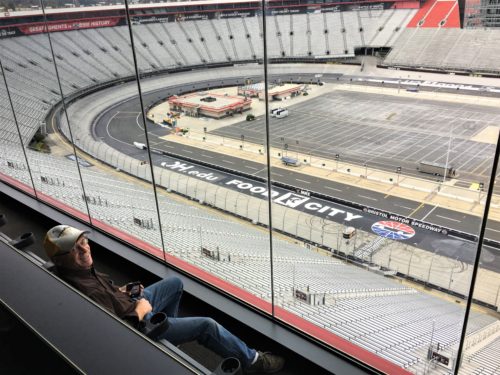
Sitting in the “by invitation only” owner’s suite!
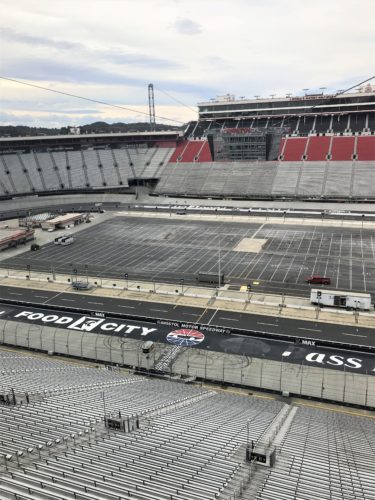
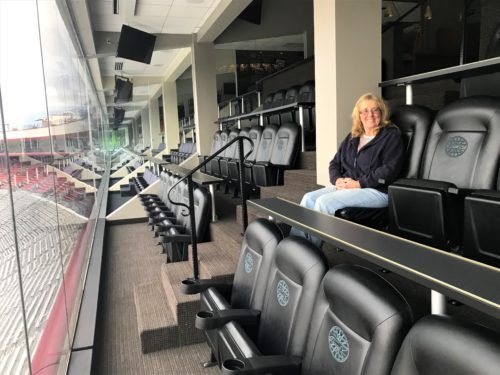
I’m telling you true – – these seats were the most comfortable things I’ve ever sat on!
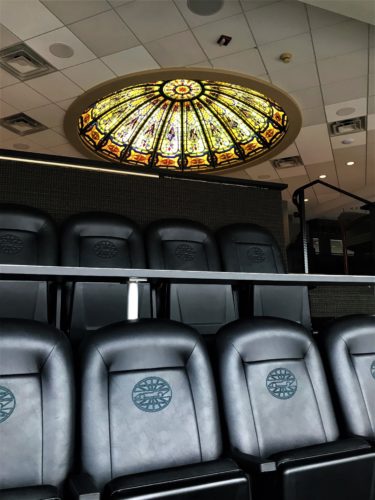
See the race cars in the leather?
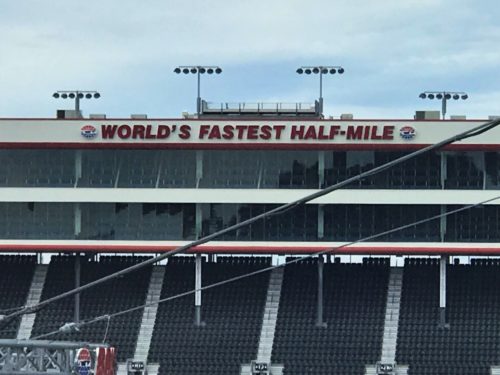
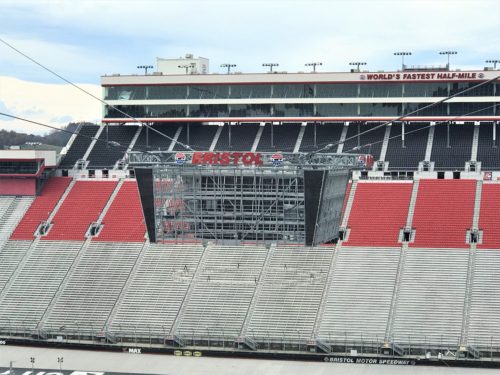
That’s a TV screen and it’s the largest non-supported one in the world.
Remember that banner I told you to remember?
Each of the TV screens are the size of that banner!
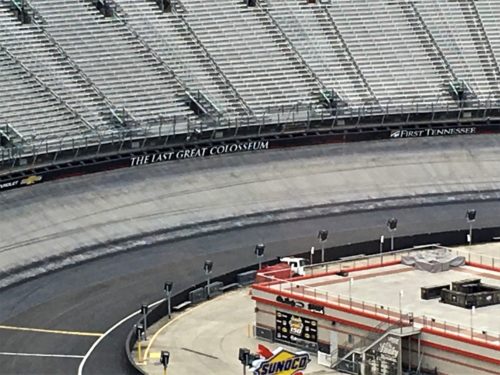
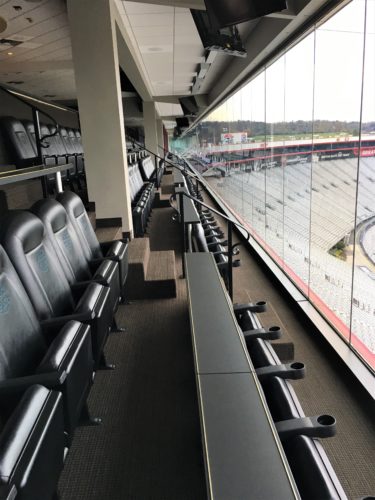
It’s not trick photography – this is a huge suite!
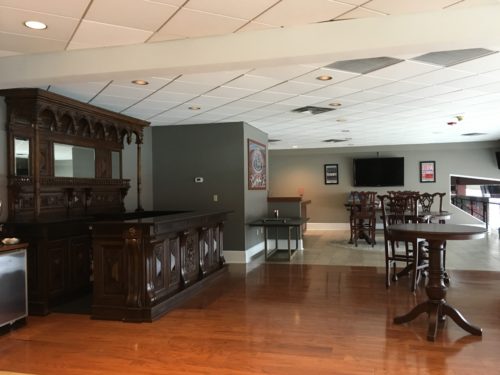
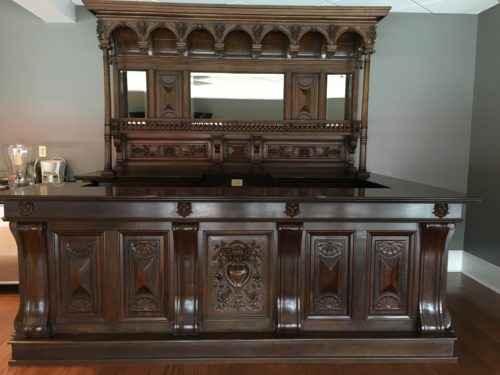
Isn’t that beautiful?
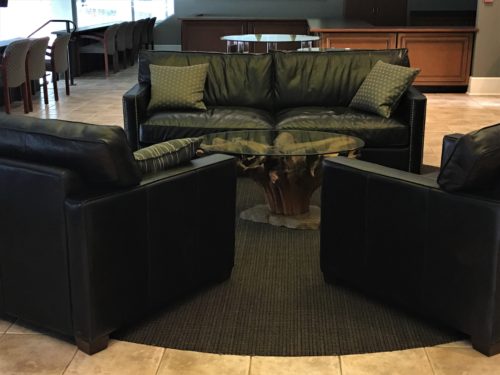
Real leather seats.
I sat on the sofa. It was too big for me and not nearly as comfortable as those stadium seats!
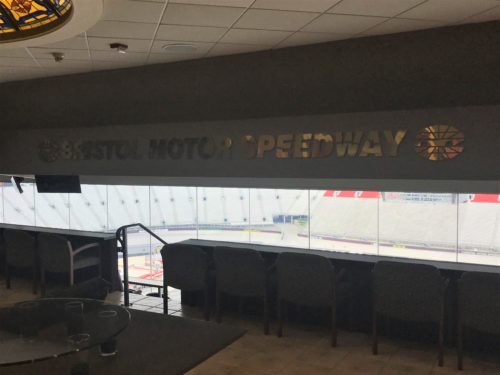
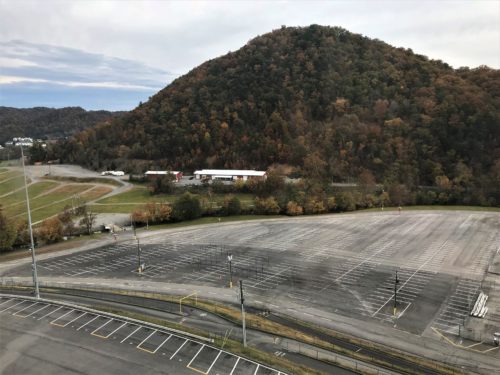
Views from outside
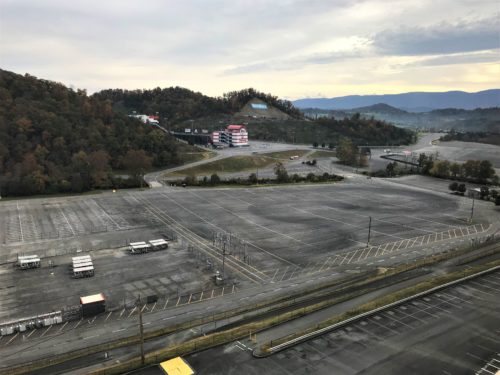
That’s the drag strip area over there. Can’t see the track though.
Back down to the van where Gayle tried to maneuver us around the decorating process.
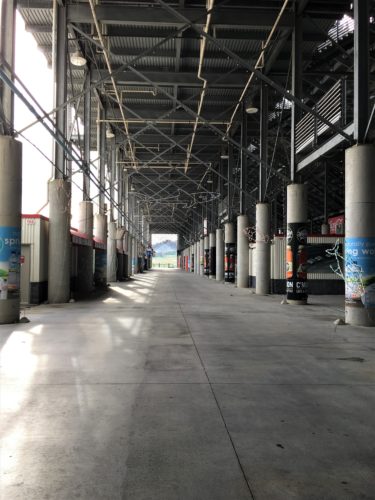
More Christmas decorations
Eventually, she found her way to the entrance to the track!
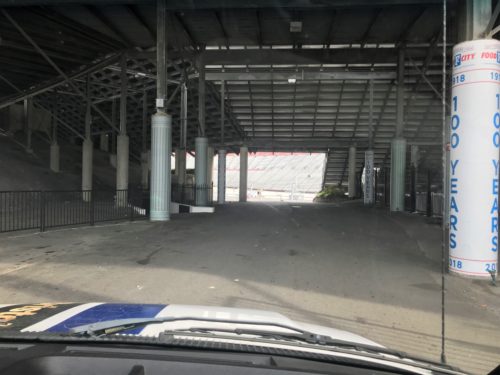
Driving onto the entrance for the racetrack.
The 100 year signs you see are for the Food City (where we grocery shopped), who sponsors the speedway.
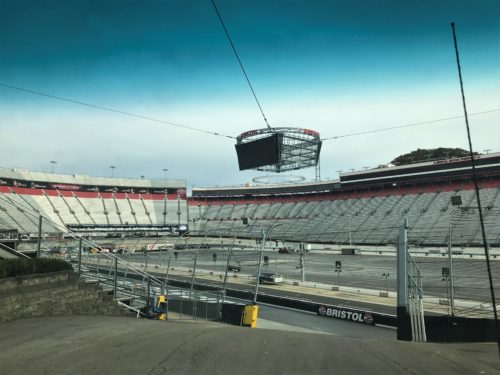
Entering the track!
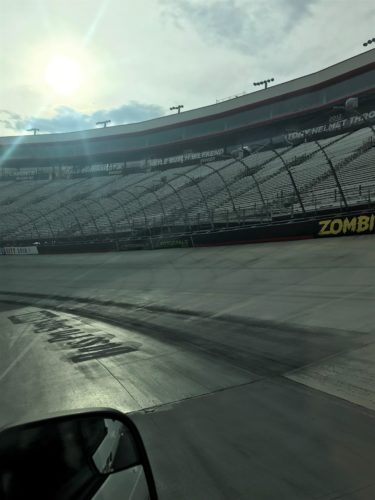
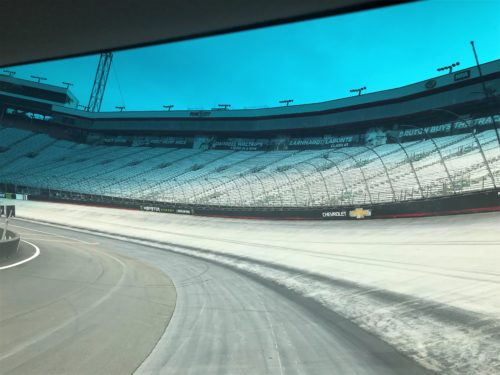
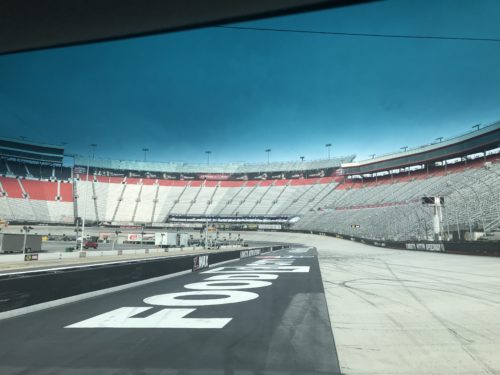
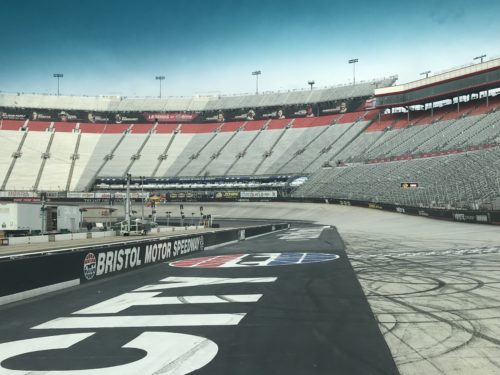
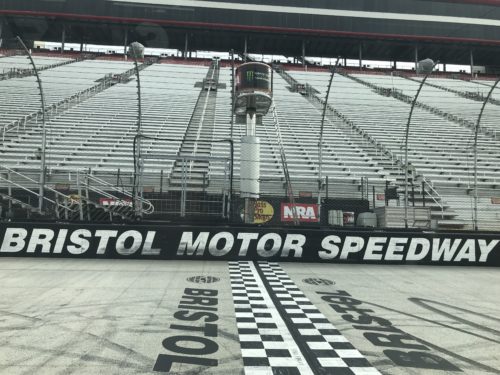
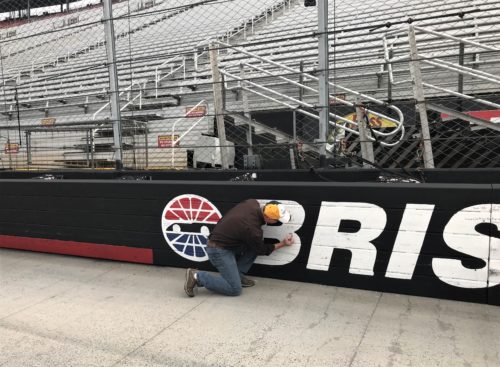
Gayle had us get out on the track and sign our names on the wall – along with a bunch of other signatures.
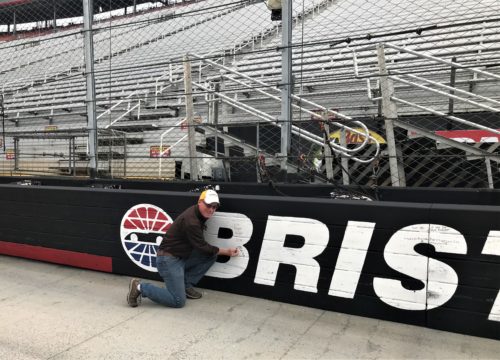
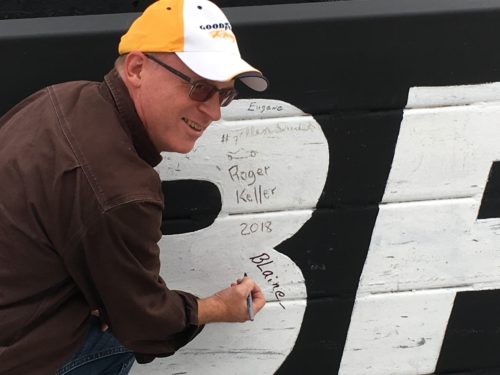
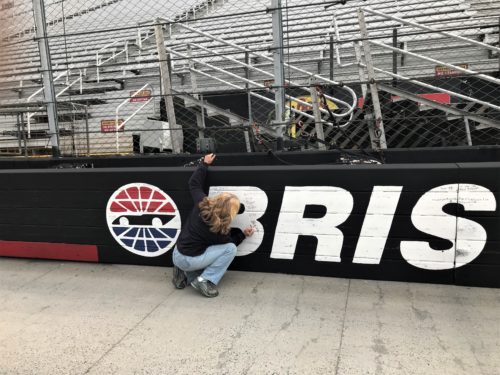

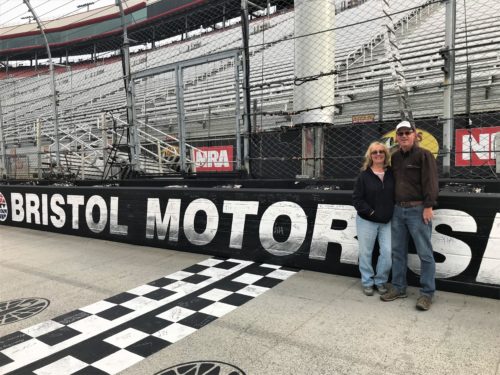
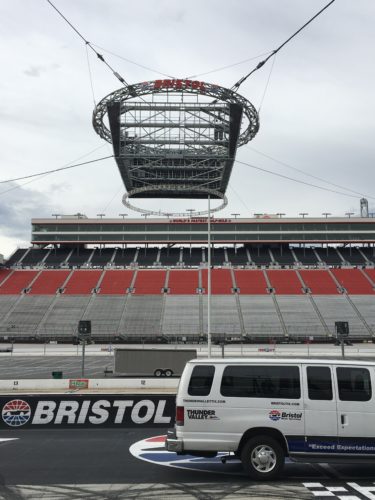
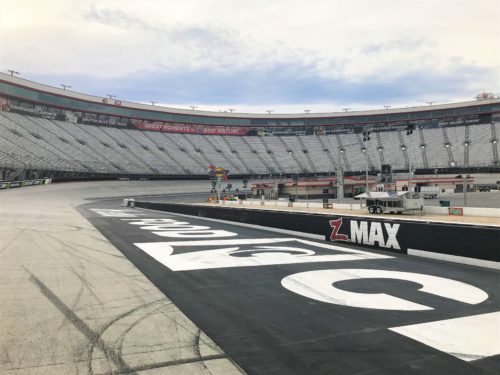
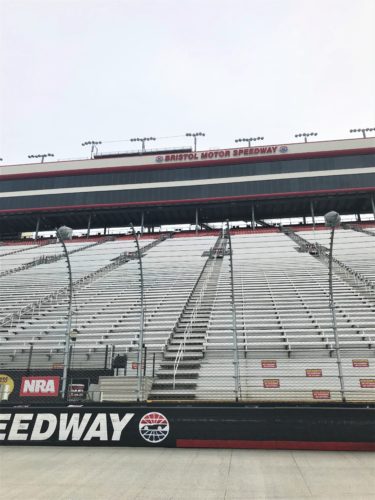
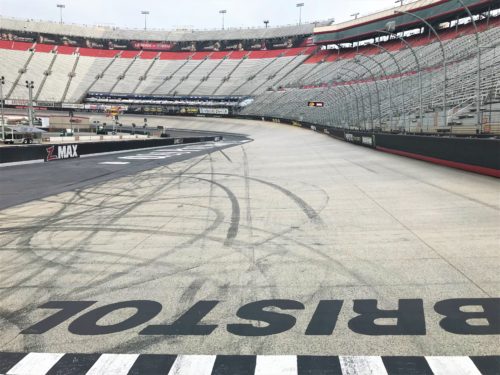
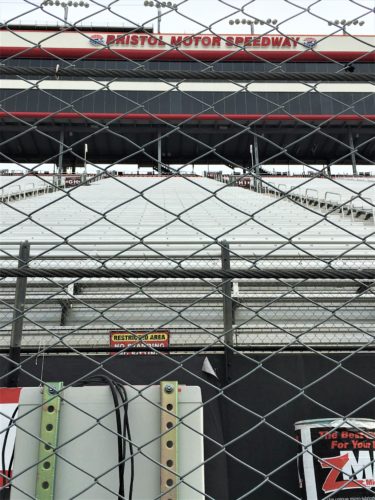
The owner’s suite is below the “B” in Bristol. Bottom row of window panes.
The top row are other less glamorous suites that go for a minimum of $1,200/year. I think Gayle said they include food.
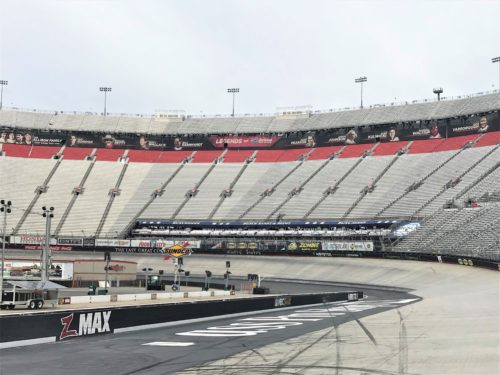
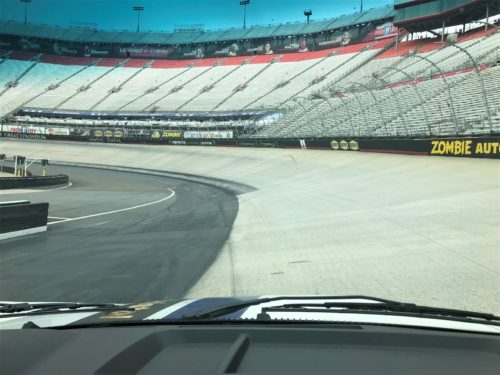
She took us up onto the bank at 25mph, and we were really leaning in our seats. Then the next bank was 35mph and we didn’t lean hardly at all. Finally, it was 45mph. Felt a little fast to us! Can’t imagine what 100+ would be like! Especially if other cars are on the track!

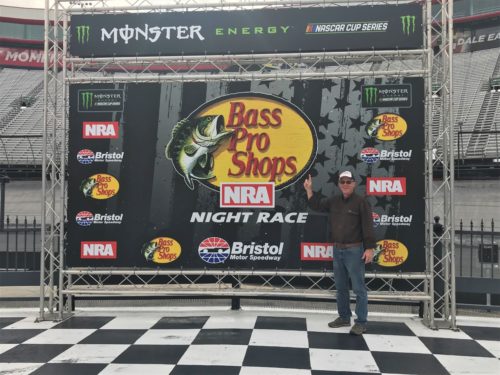
In the Winner’s Circle!
He sure doesn’t seem very excited for having just won at Bristol . . . .
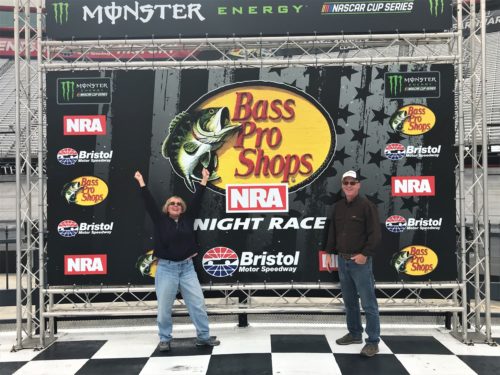
Sometimes, Blaine just shakes his head and thinks I’m a nut.
He’s not wrong. : )
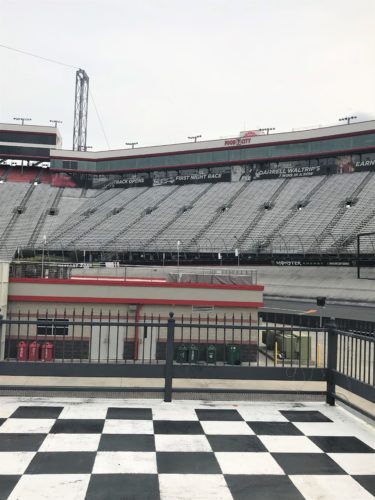
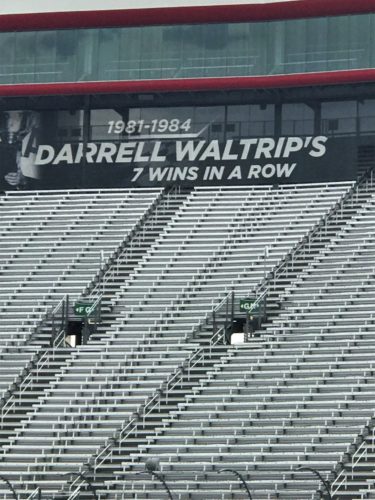
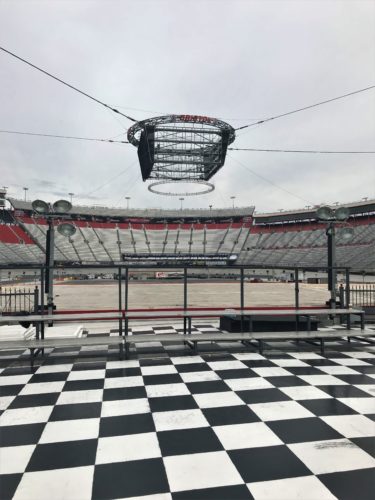
So now our tour is complete and we arrive at the starting point. But it turned out, we weren’t finished yet! Gayle told us Gate 6 was open and we could walk all around the stands – – just stay off the track. How great is that!
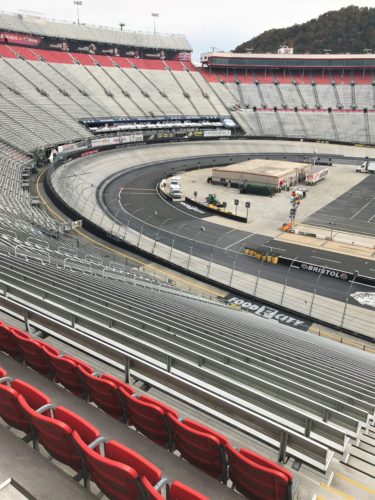
We’re on our own now!
What fun!
See the top of the stands in the far right side? (yes, those are seats above the red)
I’ll be over there in a bit.
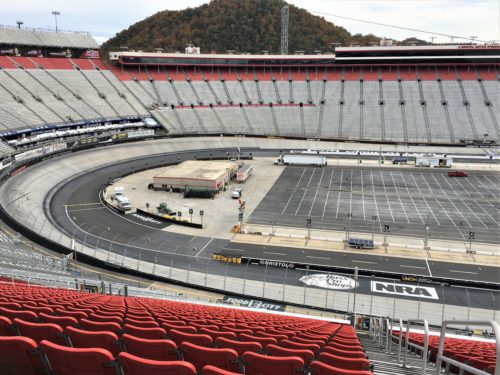

Love this picture I took!
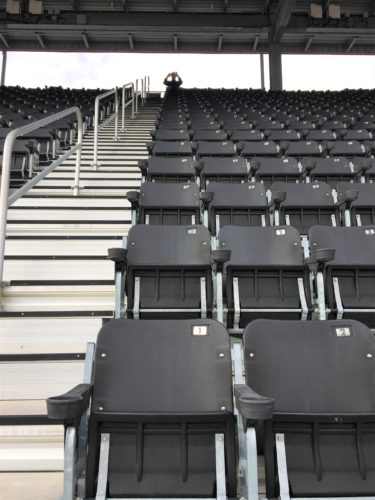
There’s Blaine – way up there!
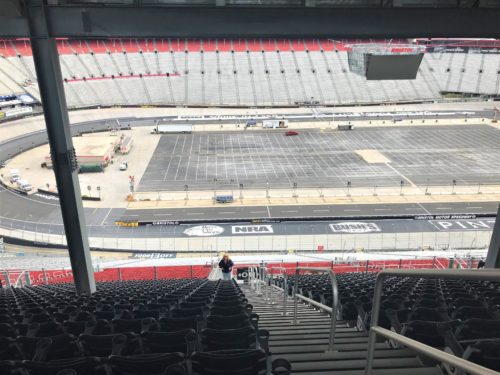
And there’s me – way down there!
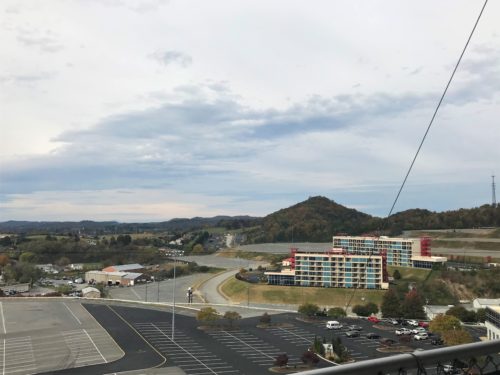
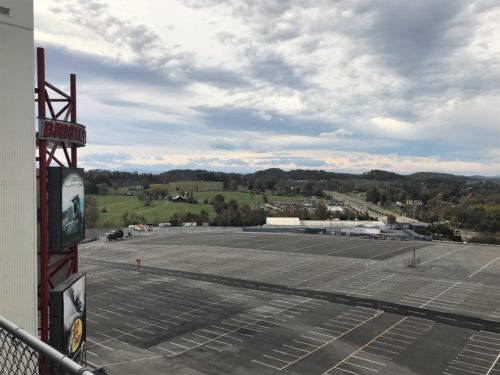
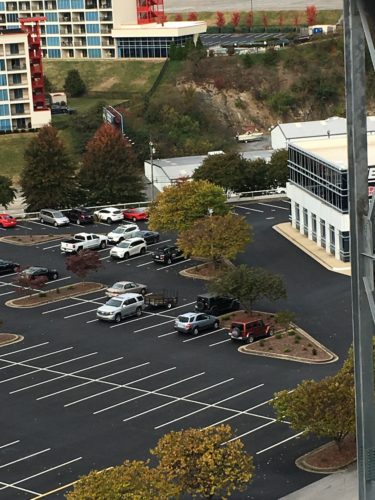
See the Jeep?
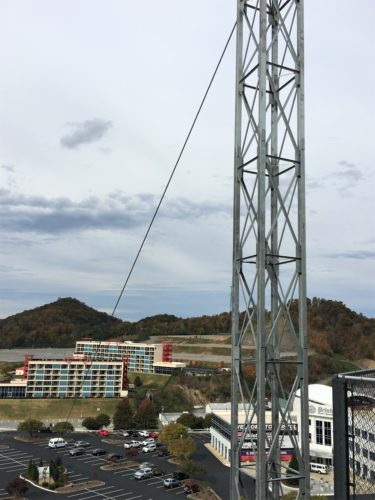
It’s in this picture too, and helps bring perspective to the TV support tower.
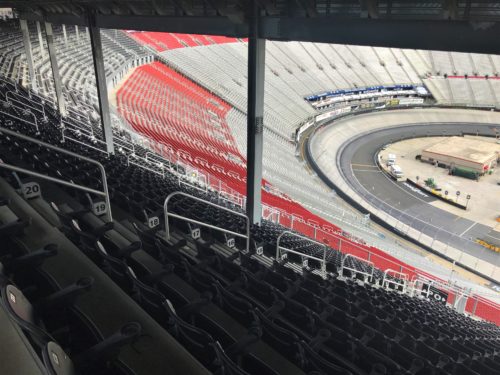
See the poles in this picture?
There are actually seats right behind them! And I mean RIGHT behind them! Who would ever pay to sit there??
I should have taken a picture . . . .
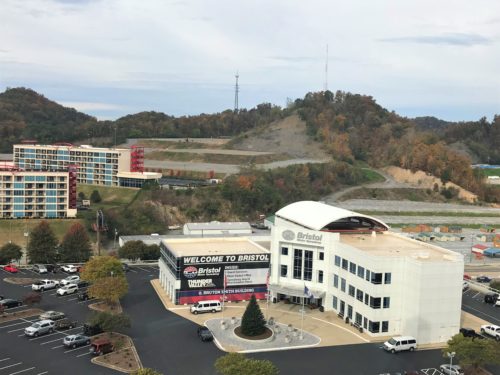
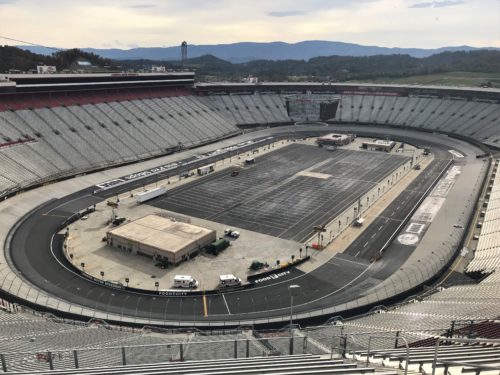
We made our way up to the highest place in the entire stadium. What you might call the nosebleed section.
The most recent figure I could find was from 1998, but at that time, the stands were 8 stories high.
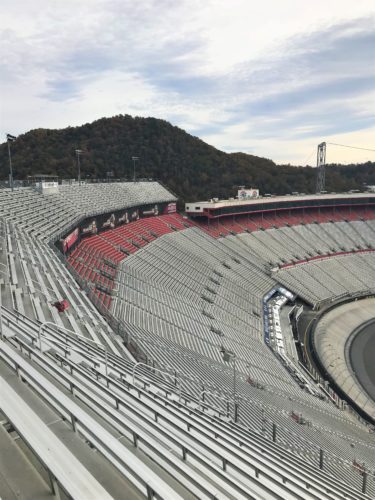
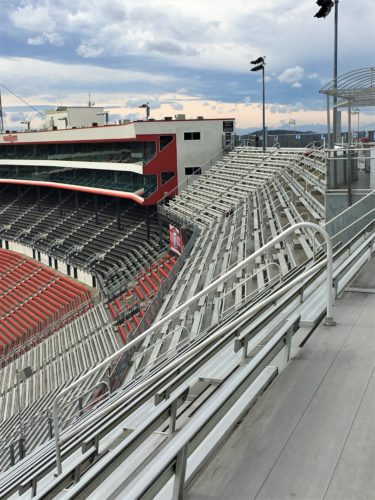
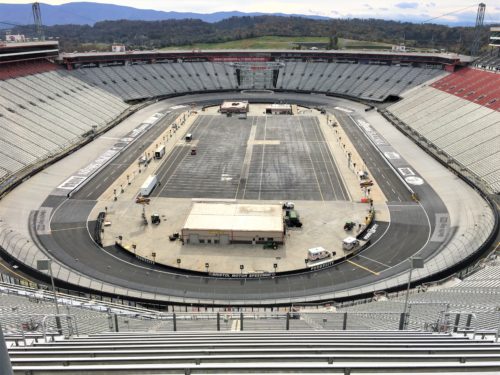
I was trying to stand in the center for this picture. I can see that I didn’t quite make it.
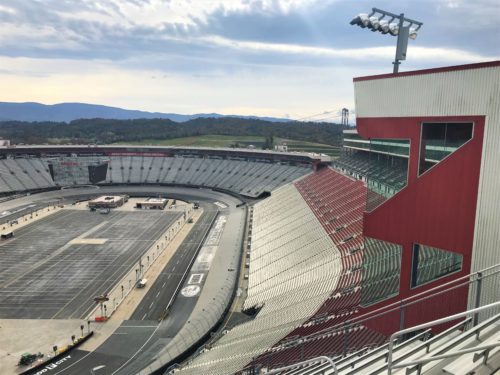
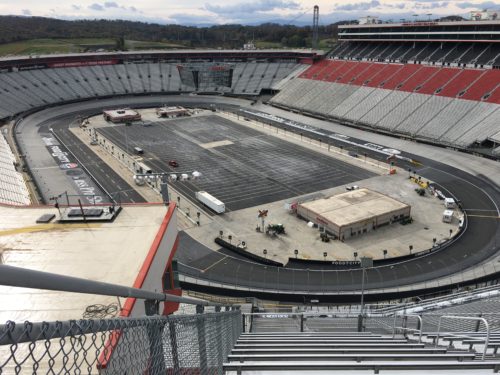
Did you ever imagine you’d ever see so many pictures of an oval racetrack?
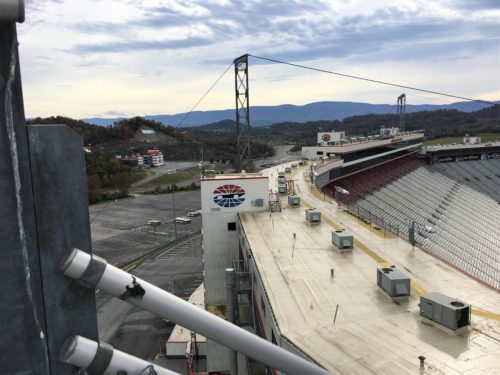
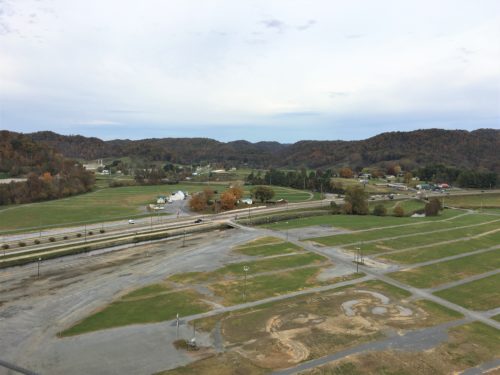
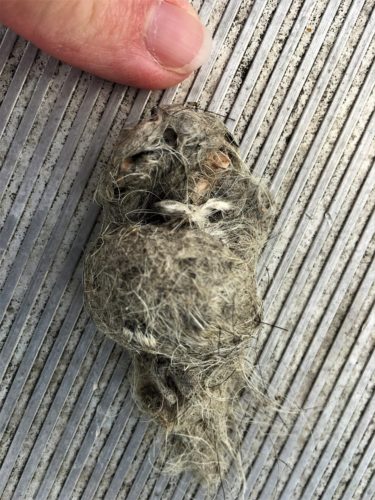
Any guess as to what this kinda gross looking thing is?

It’s an owl pellet! I flipped it over and you can even see the tiny bones.
I’ll let you look up what an owl pellet is, if you don’t already know. It’s kinda gross to explain here. : )
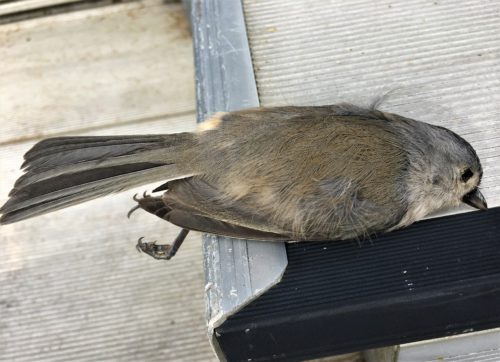
Ohhh!!! How sad!
A little bird! He most likely was flying around and misjudged or didn’t see a beam or something.
Poor thing!
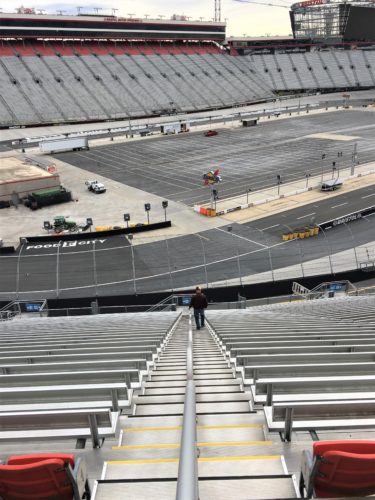
Blaine’s headed for the bottom to get a picture of the turn.
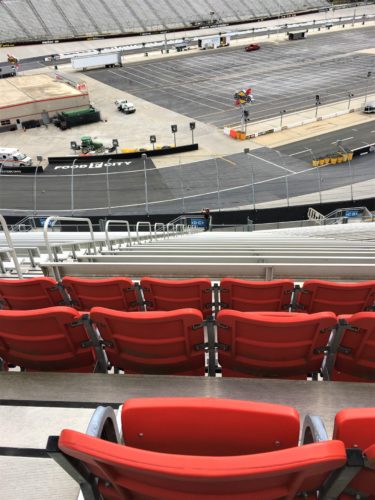
I stayed behind and sat in one of the seats.
Not nearly as comfy as the last one I was in. : )
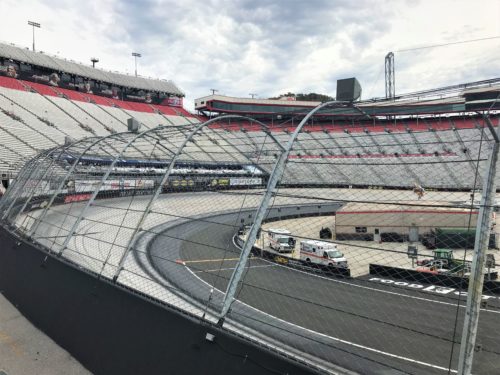
These seats would be closer to the track, but as for watching, some might be missed.
However, that being said, they go by so fast, I’m not sure it would matter . . .
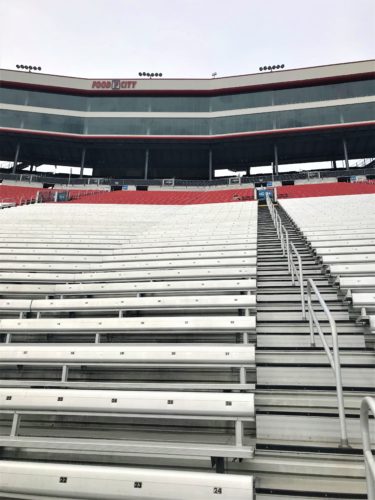
If you look close, you can see me sitting up there.
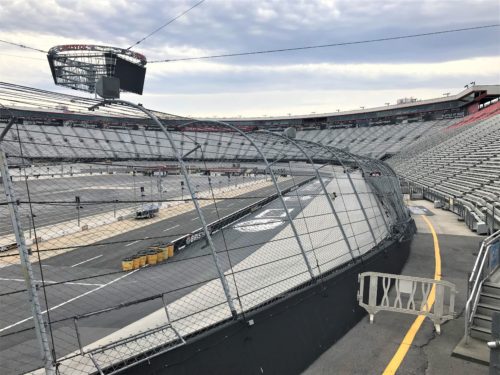
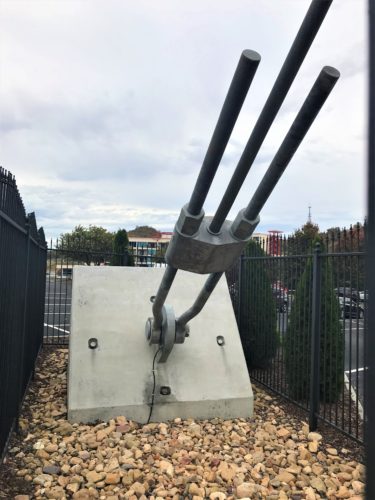
Back outside, we ran across one of the anchors for the TV. Gayle told us they poured cement about 100′ deep!
I was prepared to give credit to Darrell Waltrip for the phrase, “It’s Bristol, baby!” It just sounds like something he’d say. But no. Turns out it was Dale Earnhardt, Jr.
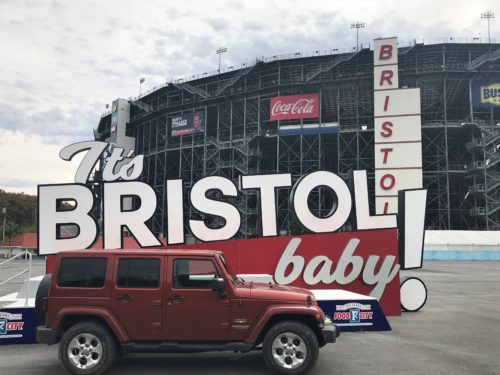
They put this sign out front and encourage people to take pictures here.
Wonder what it’s like on a busy day? Yikes!
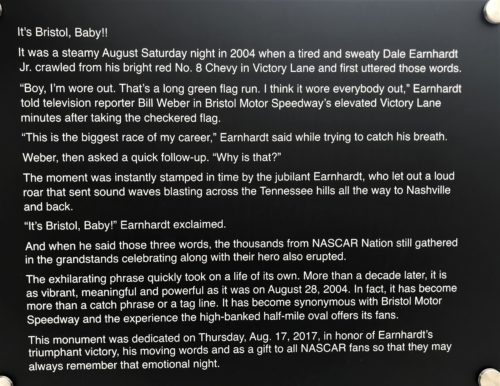
And now you know . . . . .
the rest of the story.
(a quote from Paul Harvey. Look him up if you don’t recognize his name. Great storyteller!)
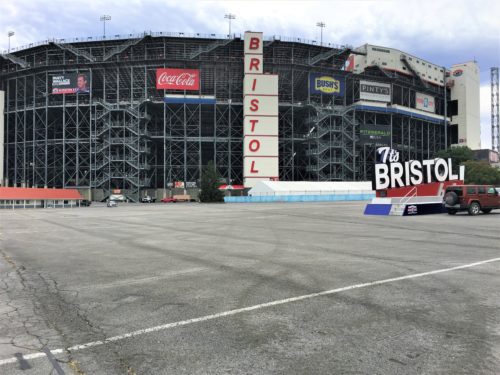
I thought I was finished filling your mind with interesting (or maybe not?) racing facts, but no. I just remembered that stock car racing began with bootleggers. Here’s a well-written, interesting article I found at auto.howstuffworks.com:
Did NASCAR really start with bootleggers?
BY LAURIE L. DOVE
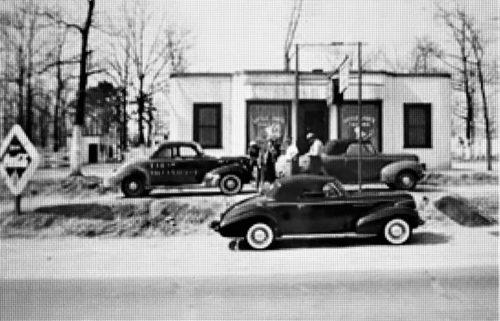
Many of stock car racing’s early stars learned their driving trade as bootleggers. Here, driver Joe Littlejohn’s race car (painted with a 7) is seen outside a tavern, looking like all the other cars in the street.
Things are looking up. You managed to extract 100 gallons (378.54 liters) of hooch from your illegal backwoods still, pour the 150-proof white lightning into jars and load them into the trunk of your car — all without being discovered by the law. Your illicit stash is tucked under blankets, just for good measure, and covered with an assortment of old coats. Now all you have to do is deliver it.
Unfortunately, that may be the most dangerous task of all. By making and delivering alcohol, you’re continuing a roughly 20-year-old illegal tradition brought on by Prohibition. The 18th Amendment officially outlawed spirits, but it didn’t dampen the desire of “spirited” entrepreneurs to fill the void. In fact, even the ratification of the 21st Amendment, which officially ended the Prohibition era, did little to curb illegal bootlegging.
So, while your black 1940 Ford Coupe may look stock (the same as any other purchased from a dealership), it’s backed by a souped-up engine so powerful it could give any revenuer a run for the money. And so could you, now that you’ve spent years honing your skills on some of America’s most challenging roadways.
As you speed through the Appalachian foothills under the cover of nightfall, navigating switchback turns and avoiding wildlife that’s wandered onto the tree-lined roads, you can’t help but smile. Instead of a stock V-8 under the hood, your car has the most powerful V-8 available at the time — an ambulance engine. Even at breakneck speeds, the car’s tight suspension keeps your load of flammable liquid stable. And you know these roads like the back of your hand, so much so that you could turn off the car’s headlamps and still get to your destination [source: AutoFoundry].
In fact, you’ve even raced some of your fellow bootleggers on these treacherous paths, vying to see who can drive away with bragging rights. You all share the same competitive drive, one that’s fueled by the souped-up vehicles that could show off your abilities. From races on public highways to dirt tracks carved into pastures, stock car racing began to take shape. Born of moonshine runners, it would eventually grow into one of today’s most popular racing circuits: NASCAR.
In 1947, one of the emerging racing sport’s most influential drivers, Big Bill France, spearheaded a meeting with fellow drivers, mechanics and owners to standardize some racing rules. Out of this meeting, the National Association for Stock Car Auto Racing (NASCAR) was formed. A mere two months later, on Feb. 15, 1948, NASCAR held its first official race on the sands of a Daytona, Florida, beach. Most — perhaps all — of the drivers were involved in the moonshine trade. One of them, Red Byron, won the inaugural race. The next week, NASCAR became incorporated, and France was named NASCAR’s first leader, a post he would eventually hand down to his son [source: Levinson].
Two years later, on Sept. 4, 1950, NASCAR held its first 500-mile (805-kilometer) race, the Southern 500. From there, NASCAR only continued to grow. By 1989, every NASCAR race was televised, lucrative sponsor partnerships had been formed and the drivers — whose predecessors were once considered outlaws — even began making regular appearances at the White House [source: Danner].
Now, with millions of fans (in 2013, televised NASCAR races drew an average of 5.8 million viewers per race), NASCAR is an integral part of American motorsports — moonshine not required [source: Margolis].
On to Warrior’s Path State Park, where we started out with lunch. By the way, we were surprised to discover how far along the trees are here. We’re not that far from where we were just yesterday!
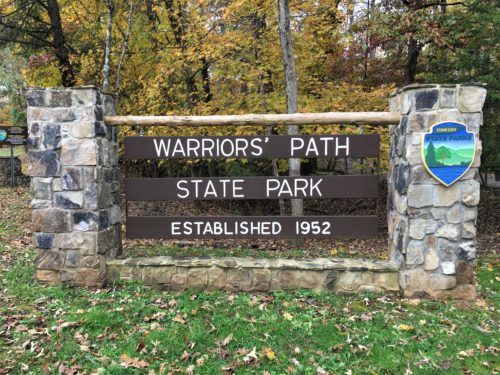
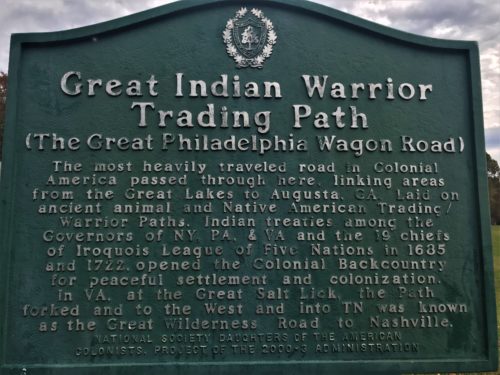
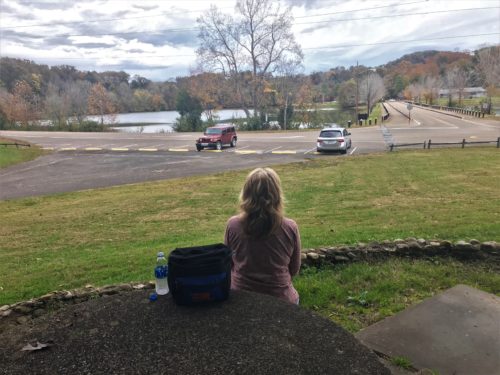
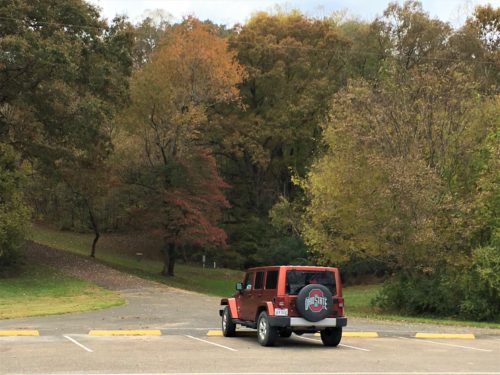
The Jeep looks much better from this angle!
There was little information to be had at this Park. We took a walk around Duck Island, before trying to find the Visitor Center to try and find trail information.
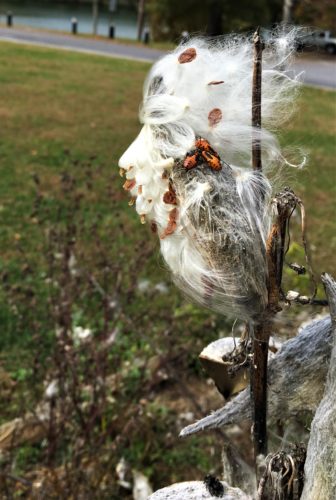
MIlkweed
Pretty!
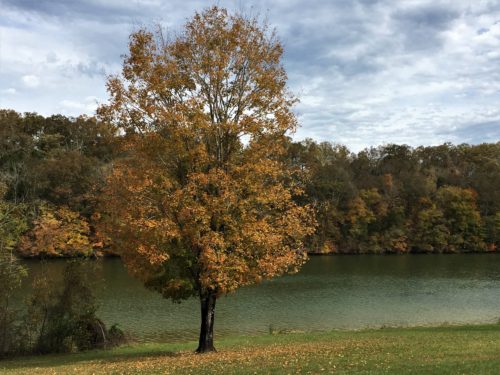
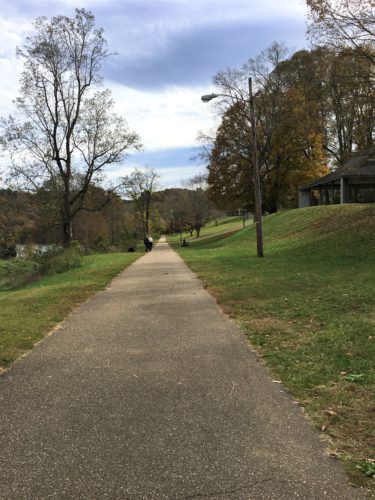
This is what the trail looks like.
Nice walking path with pretty scenery.
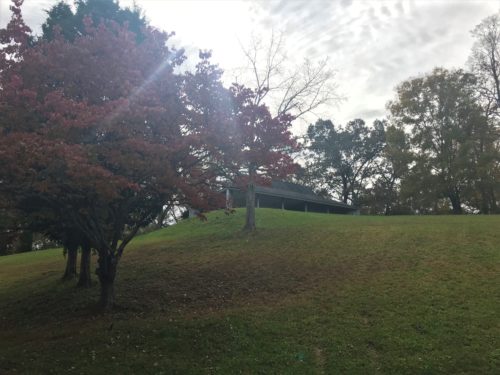
They have several nice shelters here, but most are up on top of hills!
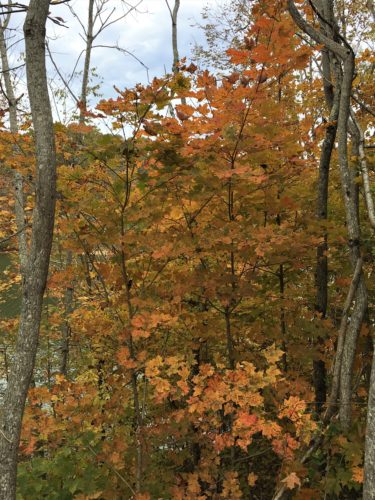
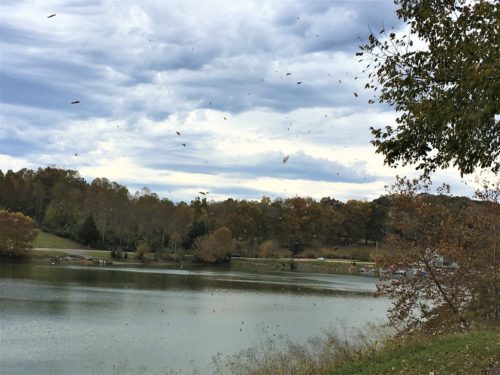
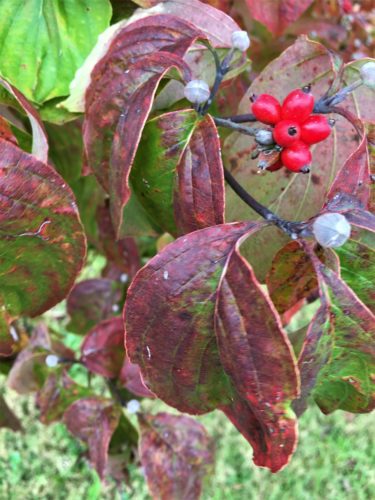
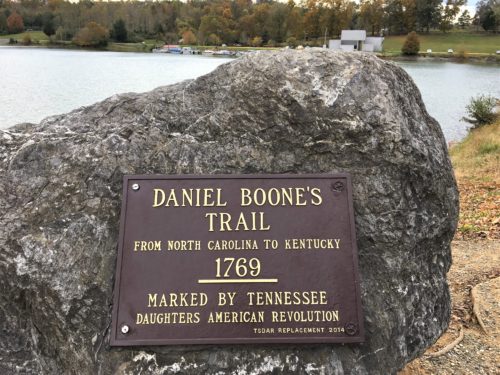
Remember him? From when we visited Cumberland Gap?
We had to go to the Park Office, where we were given two different maps – of the same thing. However, they had some contradictory information on them which led to a bit of frustration.
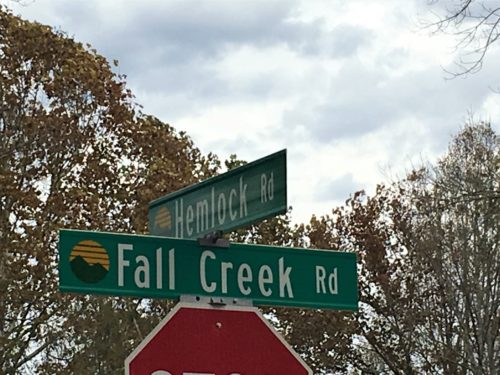
What’s with the pictures on the street signs? We’ve seen these in several states recently.
We decided to try out the Woodland Trail (which also happens to be a horse trail), but there were no trail markers. However, we finally realized the trail began at the horse barns and instead of following bread crumbs, we chose horse apples. Well, they’re larger, easier to see amongst the fallen leaves and won’t blow away in the breeze. . . .
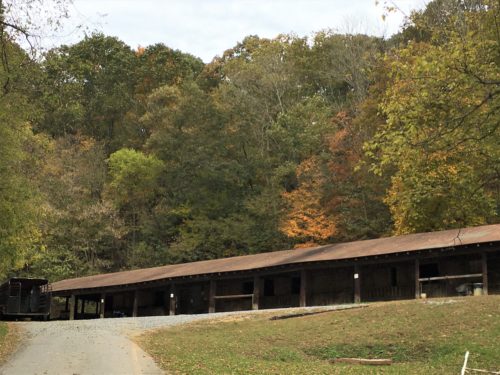
The empty stables.
Or so we thought. . . .
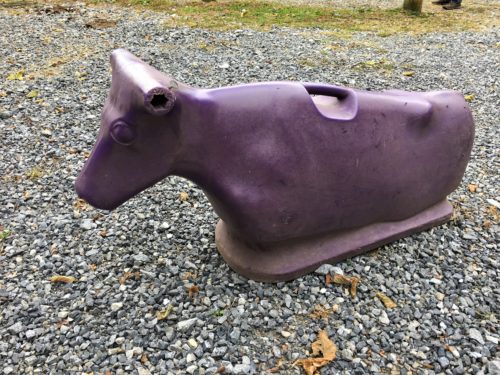
I finally saw one! A purple cow!
From the poem – –
I’ve never seen a purple cow
I never hope to see one
But I can tell you anyhow
I’d rather see than be one
: ) : ) : ) : )
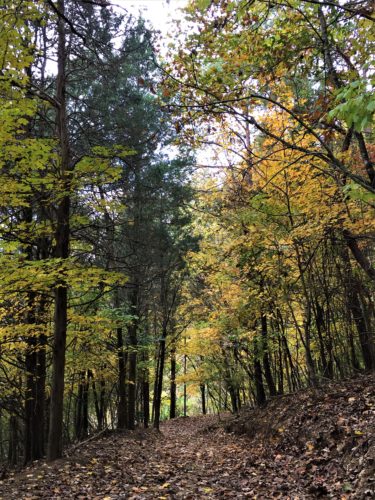
We didn’t really take into consideration that this trail – where we were told there’d be ‘the excitement of a woodland full of wildlife’ – was in the hills of Tennessee. Other horse trails we’ve hiked have been relatively flat. This was not. It was up and down and uuup and down and uuuuppp and down.
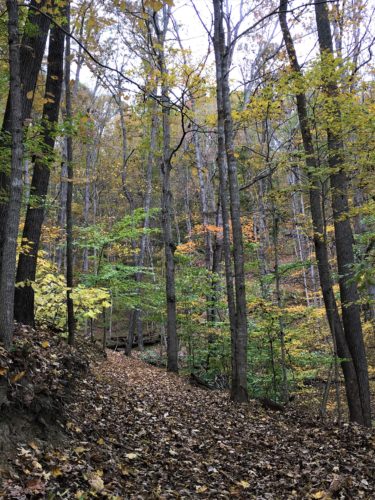
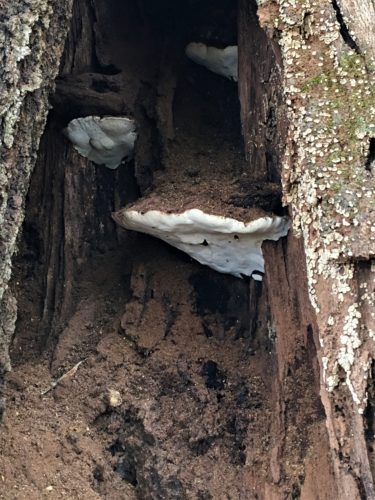
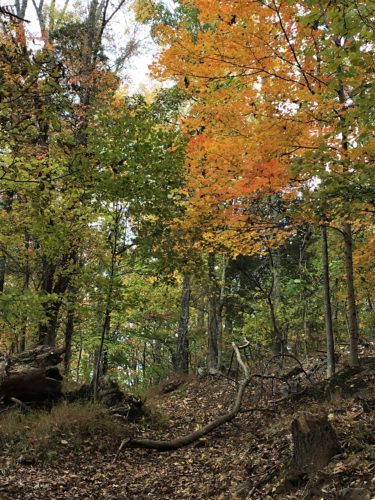
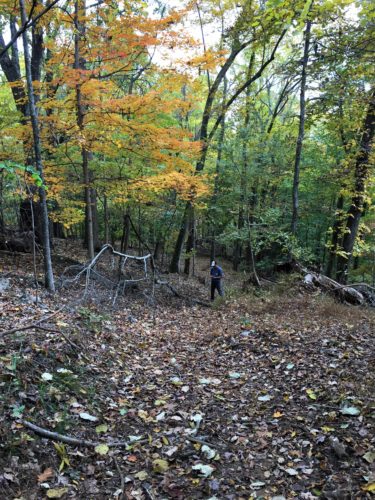
We did not see a full woodland, but we did see two deer. Several times. I’m pretty sure they weren’t too happy to keep running in to us.
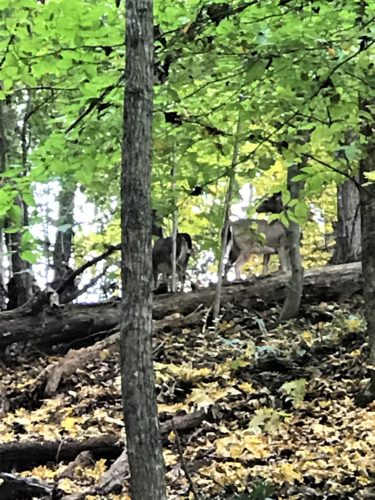
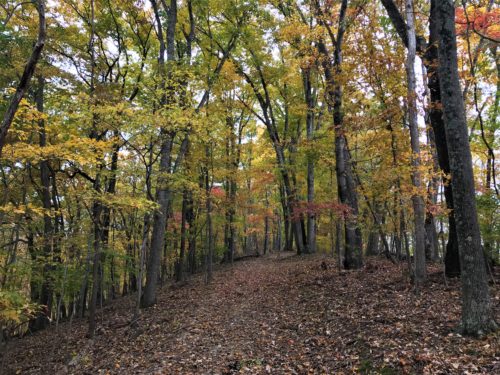
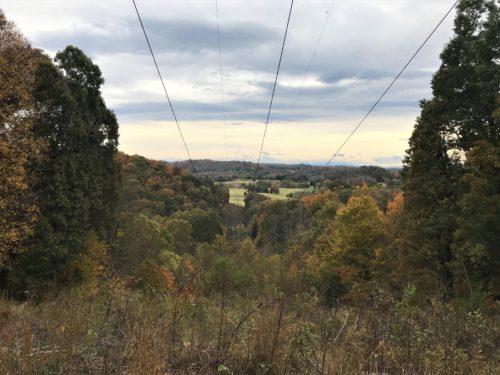
Eventually, we came to an overlook, due to the power lines in the area.
Good place to turn around.
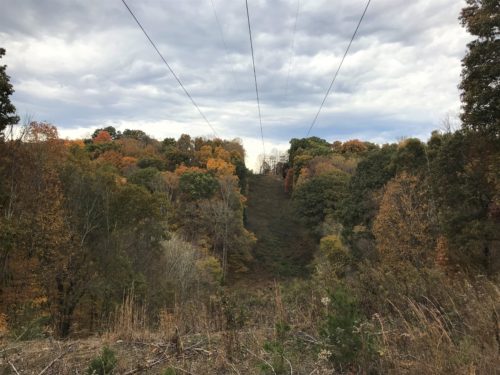
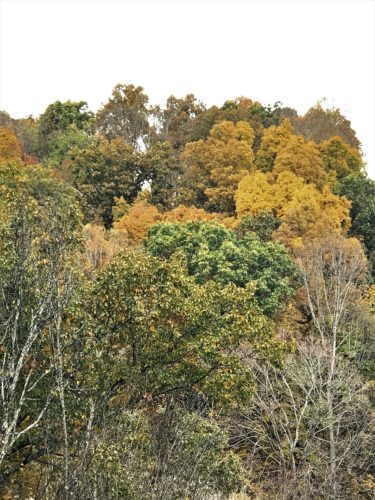
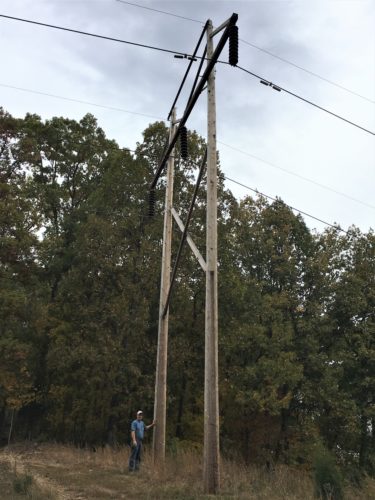
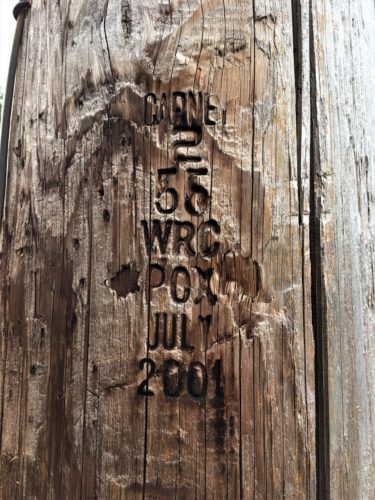
You know there’s not much to photograph when you take a picture of the stamp on the power pole . . . .
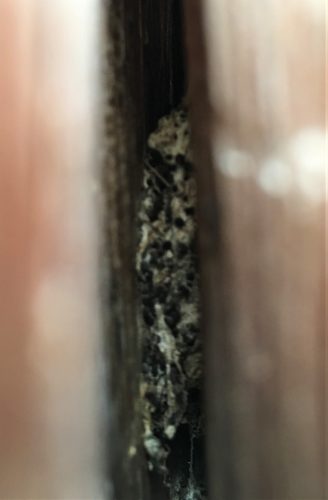
But then, Blaine noticed this!
A hornet’s nest inside the pole!
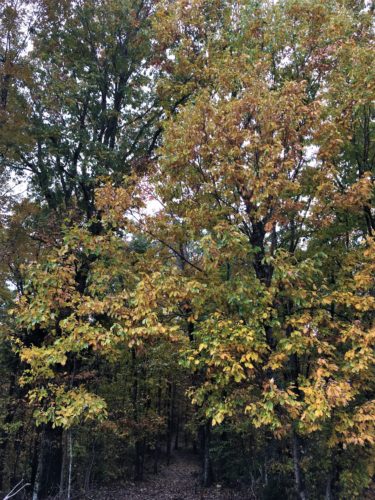
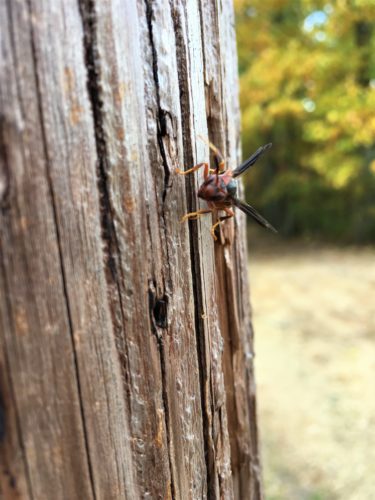
I tried to find out what kind this was, but was unsuccessful.
I hate that. . . .enquiring minds want to know!
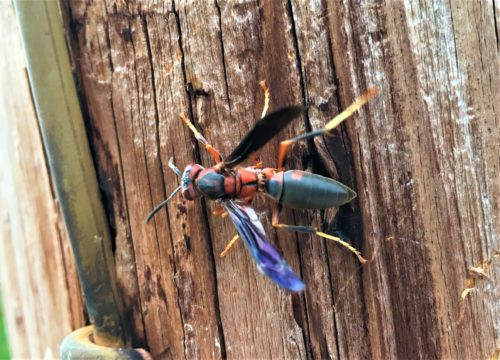
Isn’t it awesome?
Look at the detail and the color!
God is truly marvelous!
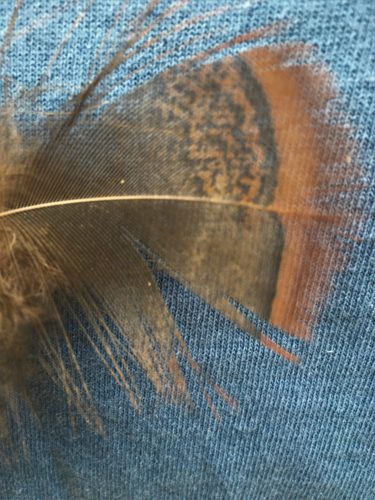
We also found what we believe to be a hawk feather.
Look at that detail!
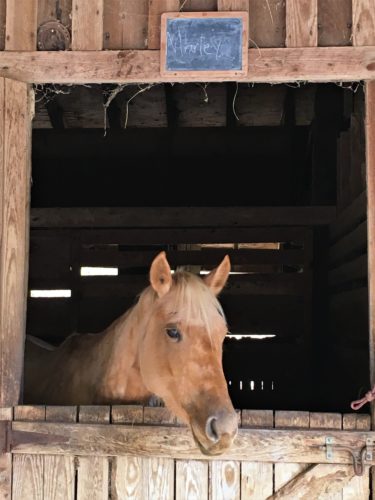
Ah! More ‘wildlife’!
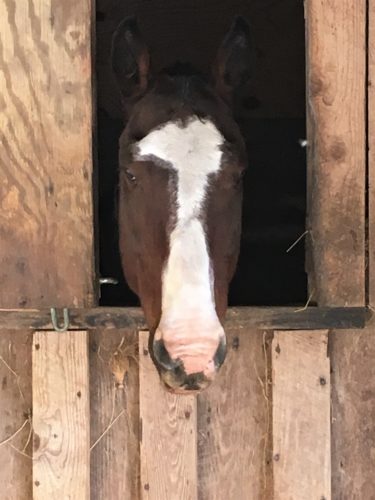
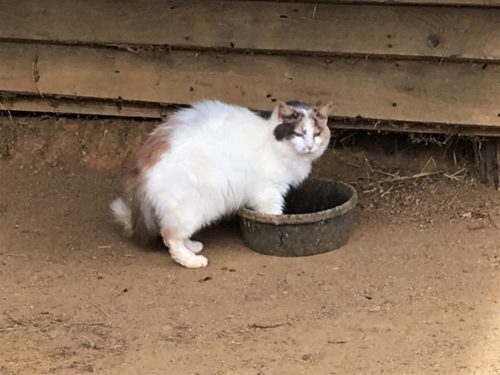
Next, we chose the Overlook Trail. Now, when you hear ‘overlook’, what comes to mind? Hold that thought for a minute.
We had some trouble locating the trailhead, because once again, things just weren’t marked well – neither on the maps, nor in the Park. But we persisted and eventually found it.
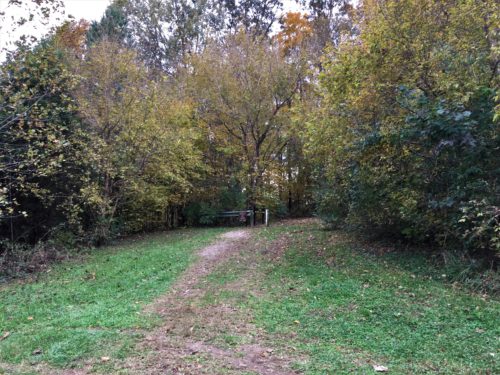
Come on! How are you supposed to see that sign from the parking lot – which, by the way, was around the corner!
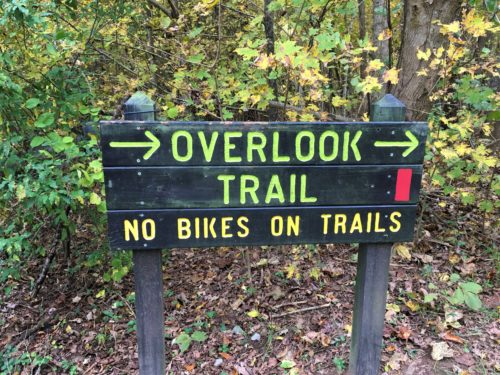
According to the maps, it was supposed to be a straight trail with a heart-shaped loop. Think heart-shaped balloon with a string hanging down.
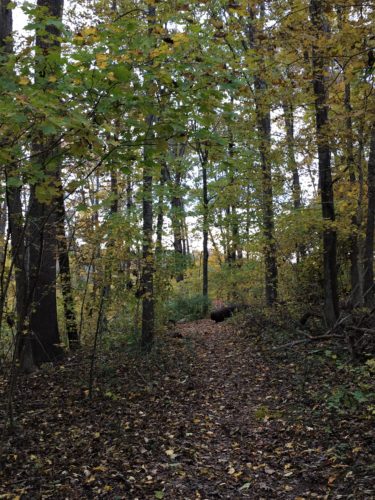
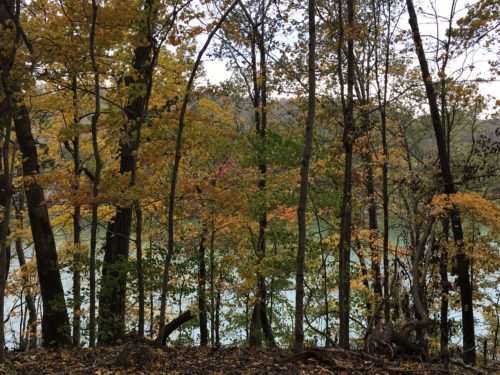
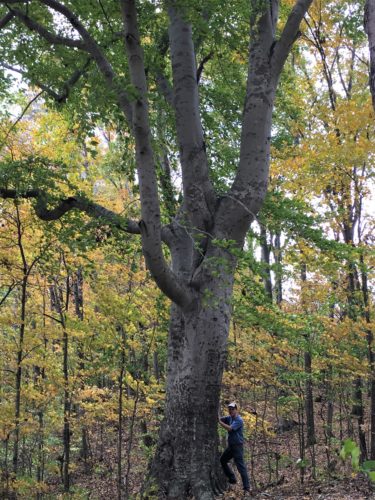
That is one really huge and beautiful tree!
We never found the loop, or at least not the whole thing.
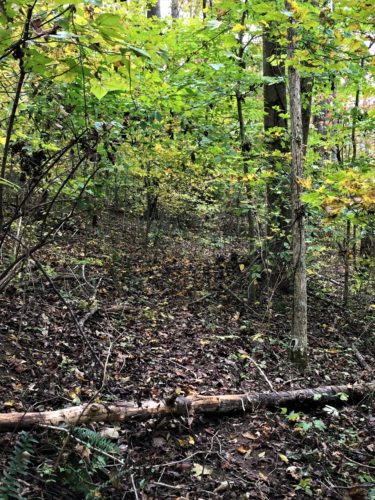
Hmmm . . . are we loosing our trail?
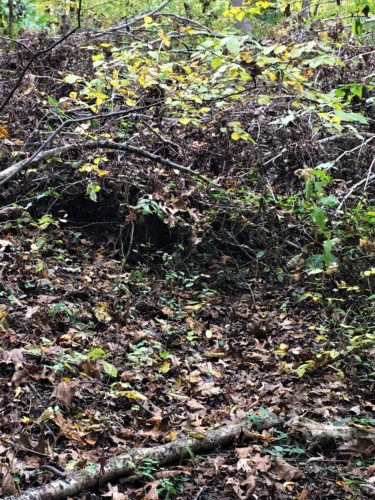
Dead end.
Guess we lost it somewhere.
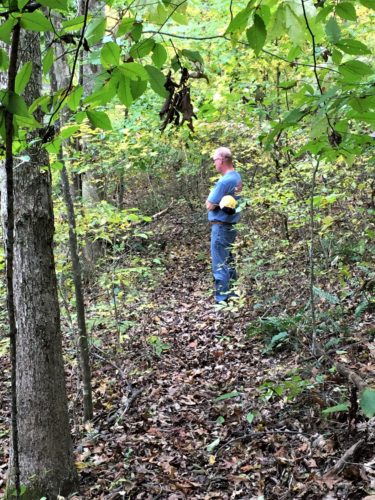
Pondering our predicament?
Or just waiting for me to get done taking pictures?
We turned around, but on the way back, we accidentally stumbled upon an overlook. Sort of. It was the only place.
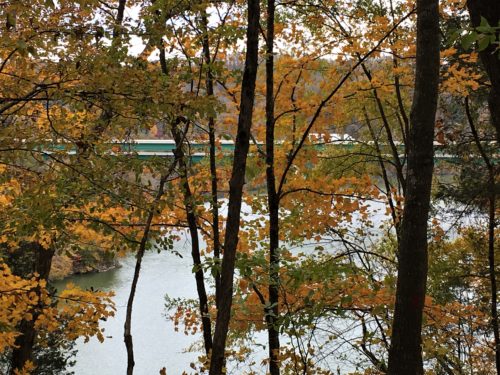
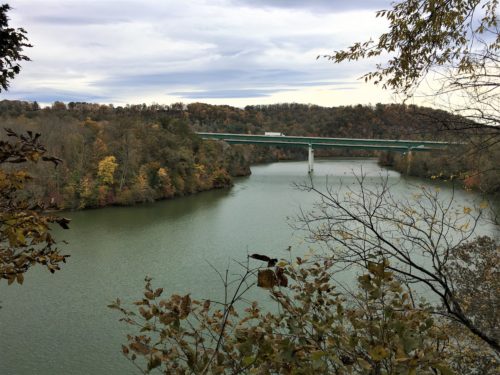
As far as we know, this is the overlook.
Not exactly what we were hoping for . . . .
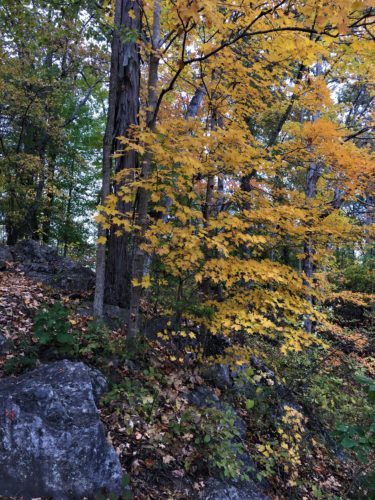
But there’s still beauty all around!
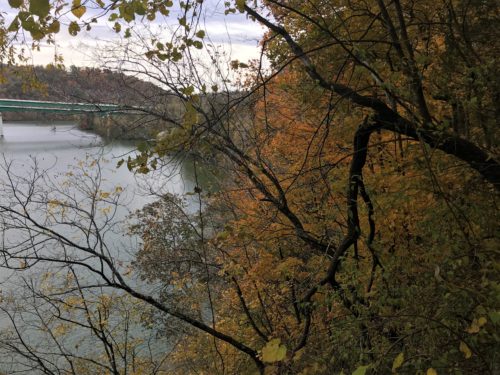
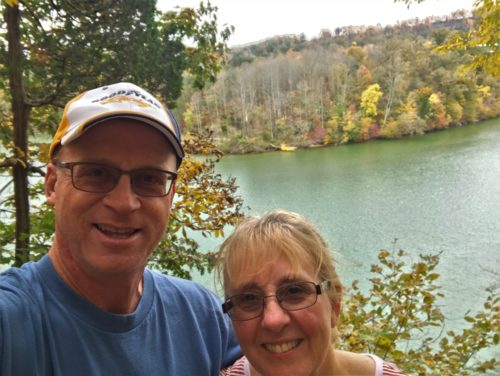
Oh. And we heard Christmas music on the way home! Sheesh! Bah Humbug!
Okay. I’ll admit it. I enjoyed Debbie Gibson singing “Sleigh Ride”. But then it was time to change the station.
